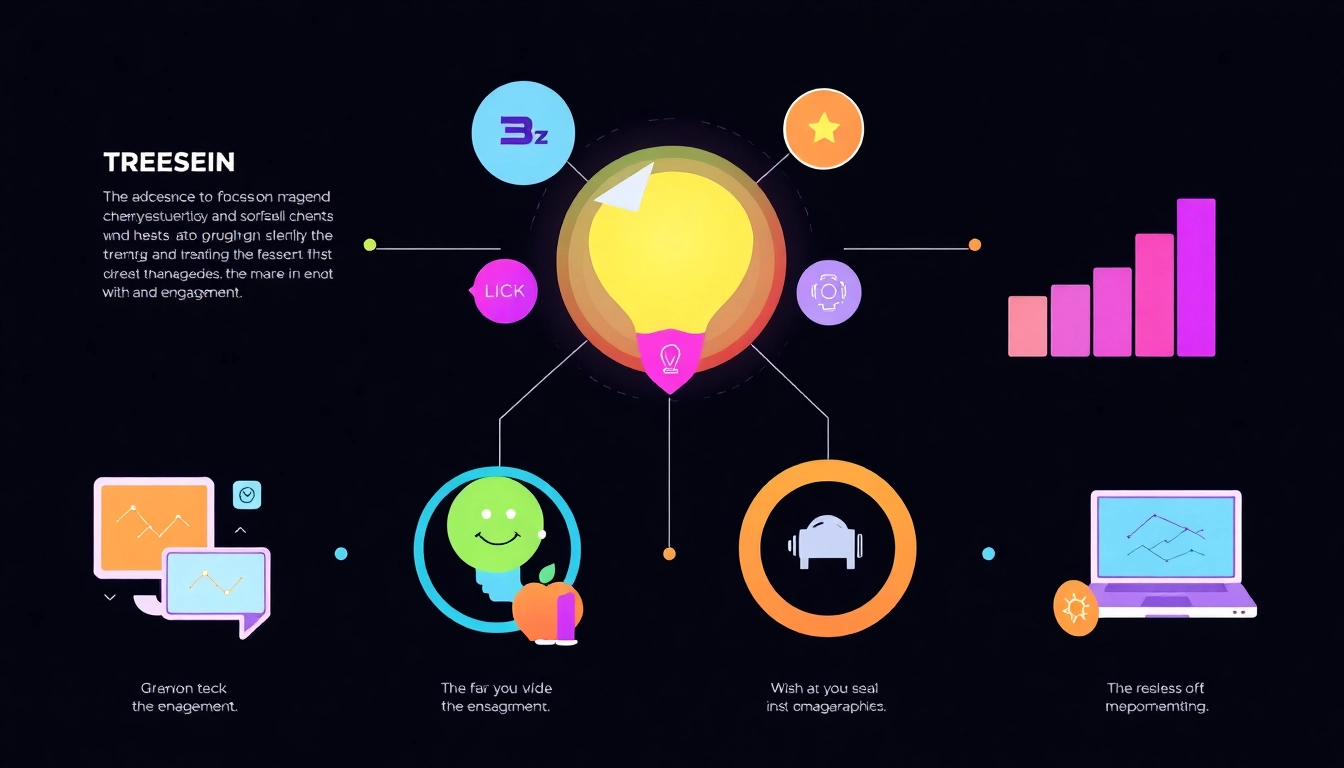Understanding the Landscape of Emerging Technologies
The rapid evolution of technology is reshaping how businesses operate, interact with customers, and develop products and services. In this dynamic environment, understanding emerging technologies is crucial for organizations aiming to maintain competitiveness and drive innovation. Companies like www.informaticsview.com provide critical insights into these transformations, helping tech professionals and decision-makers navigate the complexities of the digital age.
The Role of www.informaticsview.com in Tech Insights
In the vast ocean of information available today, filtering out noise to focus on actionable insights is essential. www.informaticsview.com plays a pivotal role by curating content that matters, focusing on emerging trends in technology. With expert analysis and up-to-date resources, this platform offers vital tools for professionals engaged in technology, data science, business analytics, and more. By leveraging insights from experts and thought leaders, stakeholders can better align their strategies with current tech narratives.
Identifying Key Trends Shaping Technology
Several key trends are currently reshaping the technological landscape. These include:
- Artificial Intelligence (AI): The integration of AI across sectors is redefining operations, customer interactions, and decision-making processes.
- Blockchain Technology: Beyond cryptocurrencies, blockchain is revolutionizing data security and transparency in various fields.
- Big Data Analytics: With the exponential growth of data, businesses are increasingly relying on analytics to derive actionable insights.
- Remote and Hybrid Work Solutions: The shift to remote work has accelerated digital transformation across various industries.
- Internet of Things (IoT): IoT devices are creating interconnected ecosystems for gathering data and enhancing user experience.
Staying abreast of these trends is essential for tech professionals who wish to leverage potential advancements for growth and innovation.
Analyzing User Needs in the Digital Age
Understanding user needs is pivotal in the digital world. As technological innovations unfold, user expectations evolve, leading to the necessity for businesses to adapt their approaches. This adaptation involves comprehensive market research, user feedback analysis, and empathy-driven development of products. With companies increasingly focusing on creating user-centric experiences, technologies that enhance personalization, reduce friction in user journeys, and deliver value have gained prominence.
Evaluating the Impact of Artificial Intelligence
Artificial Intelligence has transitioned from a futuristic concept to an integral part of modern business practices. Its influence permeates industries ranging from healthcare to finance and beyond, affecting how businesses operate, make decisions, and interact with customers.
Applications of AI in Various Industries
AI is redefining sectors through various applications, including but not limited to:
- Healthcare: AI algorithms analyze medical data to provide diagnostics and personalized treatment plans, streamlining operations and improving patient care.
- Finance: In finance, AI powers risk assessment algorithms and fraud detection systems, enhancing decision-making processes.
- Retail: Retailers use AI to predict consumer behavior, optimize inventory management, and personalize customer experiences.
- Manufacturing: In manufacturing, AI-enabled robots automate repetitive tasks, improving efficiency, and reducing costs.
The tangible benefits of AI applications are clear, facilitating faster processes, enhanced accuracy in decision-making, and cost savings, ultimately driving business growth.
Challenges Faced by Businesses Implementing AI
Despite the clear advantages, businesses encounter several challenges in adopting AI technologies:
- Data Quality: AI systems rely heavily on the quality of data they are trained on. Poor quality or biased data can lead to inaccurate predictions and outcomes.
- Integration with Existing Systems: Integrating AI solutions with legacy systems can be complex and often requires significant changes to existing workflows.
- Regulatory Compliance: Navigating the regulatory landscape regarding AI use can be daunting, especially in sensitive sectors like healthcare and finance.
- Skill Gaps: The shortage of skilled labor in AI development and implementation poses another challenge for companies aiming to leverage this technology effectively.
Identifying and addressing these challenges is key to successfully leveraging AI capabilities and ensuring a smooth transition in technology adoption.
Future Outlook and What It Means for Users
The future of AI is promising, with predictions indicating continued growth and innovation in this field. As AI technologies advance, they will increasingly focus on augmenting human capabilities rather than replacing them. This paradigm shift will lead to more collaborative human-AI systems, enabling users to perform tasks more efficiently and creatively. Companies and professionals who prioritize ethical AI practices, transparency, and user-centric design will be well-positioned to harness the benefits of AI while addressing its challenges. Ultimately, as AI evolves, so too will the nature of work, requiring ongoing adaptation and learning.
Blockchain and Its Revolutionary Potential
Blockchain technology has emerged as one of the most significant innovations of the 21st century, offering solutions to long-standing problems associated with data security, transparency, and trust across various sectors.
How www.informaticsview.com Explores Blockchain Usage
Blockchain’s potential goes far beyond its initial association with cryptocurrencies. www.informaticsview.com provides in-depth explorations of how blockchain can be utilized in areas like supply chain management, healthcare, and finance, showcasing its ability to enhance transactional security and efficiency. By presenting real-world examples and case studies, the platform delivers valuable insights into how businesses adopt and implement this transformative technology.
Real-world Applications and Case Studies
Real-world applications of blockchain technology demonstrate its versatility. Consider the following examples:
- Supply Chain Management: Companies like IBM are using blockchain to enhance transparency and traceability throughout the supply chain, ensuring the provenance of goods and mitigating issues such as counterfeiting.
- Healthcare: Blockchain is being explored for secure and interoperable health record management, enabling patients to have more control over their health data while enhancing data security.
- Finance: Financial institutions are leveraging blockchain for secure transactions, cross-border payments, and more efficient settlement processes, exemplifying how this technology can enhance trust in the financial ecosystem.
These case studies not only highlight blockchain technology’s potential but also encourage adoption across various industries as stakeholders realize the numerous advantages it offers.
Addressing Security and Transparency Issues
While blockchain offers enhanced security through cryptographic techniques, it is essential to address concerns such as scalability, energy consumption, and regulatory issues. Maintaining a decentralized system while ensuring efficiency remains a key focus for developers. Additionally, as blockchain technology matures, it is crucial for organizations to invest in research and development for effective scalability solutions, ultimately enabling wider adoption and use of the technology in various applications.
Big Data and Analytics: Driving Informed Decisions
Big data analytics has become a cornerstone of modern business strategy, enabling organizations to make data-driven decisions, enhance operational efficiency, and better understand customer behavior.
Leveraging Data in Your Business Model
Data is the new oil, and organizations are increasingly leveraging big data across their business models. By harnessing comprehensive datasets, businesses can identify patterns, forecast trends, and optimize operational strategies. Key strategies for leveraging data effectively include:
- Data Integration: Combining data from various sources, such as customer interactions, sales, and market trends, provides a holistic view and deep insights into business performance.
- Predictive Analytics: Through predictive modeling, organizations can anticipate customer needs and market changes, allowing for proactive decision-making.
- Real-Time Analysis: Implementing real-time analytics facilitates immediate insights, enabling businesses to react promptly to market shifts, enhancing competitiveness.
Adopting these strategies can significantly enhance an organization’s capabilities in data utilization and competitive positioning.
Performance Metrics to Measure Success
To evaluate the effectiveness of data strategies, businesses must employ relevant performance metrics. Common metrics include:
- Customer Acquisition Cost (CAC): This metric evaluates the cost-effectiveness of marketing and sales strategies.
- Customer Lifetime Value (CLV): Understanding the long-term value each customer brings helps formulate retention strategies.
- Return on Investment (ROI): By measuring ROI on data initiatives, organizations can assess the value generated from analytical investments.
- Data Quality Scores: Tracking data quality ensures accuracy in analytics, contributing to better decision-making.
Utilizing these metrics enables organizations to measure success quantitatively and iteratively enhances their approach to data-driven decision-making.
The Role of Analytics in User Experience Enhancement
Analytics provides invaluable insights into user preferences, enabling businesses to tailor their offerings for optimal user experience. Key aspects include:
- Personalization: Utilizing data to personalize experiences leads to increased customer satisfaction and loyalty.
- Journey Mapping: Analyzing customer journeys helps identify pain points, allowing businesses to enhance their interfaces and user interactions.
- A/B Testing: This allows organizations to measure user responses to different approaches, optimizing and enhancing overall user experience.
Through effective analytics, businesses can drive enhancements in user experience, fostering loyalty and engagement.
Preparing for the Future: Skills and Tools Needed
As technology continues to evolve, so too must the skills possessed by tech professionals. Organizations must adapt to ensure their teams are equipped to handle emerging challenges and leverage new opportunities.
Essential Skills for Tech Professionals Today
To thrive in this dynamic landscape, tech professionals should focus on acquiring the following essential skills:
- Data Literacy: Professionals must be adept at interpreting data, utilizing it to derive insights that inform business outcomes.
- AI & Machine Learning: Understanding AI technologies and their applications is critical as these dominate the future business environment.
- Cybersecurity Expertise: As technological advancements progress, so do security threats; therefore, cybersecurity skills are invaluable.
- Agile Methodologies: Familiarity with agile practices fosters adaptability and responsiveness in project management.
Developing these skills is essential for professionals seeking to advance their careers and lead in tech-driven environments.
Recommended Tools from www.informaticsview.com
Leveraging the right tools can significantly enhance productivity and performance. Here are some recommended tools that align with current technological advancements:
- Data Analytics Platforms: Tools like Tableau and Power BI help transform raw data into coherent visual insights.
- Machine Learning Frameworks: TensorFlow and PyTorch are essential for developing and deploying machine learning models.
- Project Management Tools: Asana and Trello aid in team collaboration and project tracking, enhancing productivity in agile environments.
- Cybersecurity Solutions: Tools like Splunk and CrowdStrike are crucial for monitoring and protecting against cyber threats.
Utilizing these tools allows tech professionals to optimize workflows and adapt to emerging trends effectively.
Continuous Learning: Staying Ahead of the Curve
In an ever-evolving technological landscape, continuous learning is not just beneficial but necessary. Professionals should seek opportunities for ongoing education, whether through formal education, online courses, workshops, or conferences. The following strategies can facilitate continuous learning:
- Participate in Webinars: Engaging with industry experts through webinars can provide valuable insights into emerging trends and practices.
- Join Professional Networks: Being part of professional associations fosters knowledge sharing and networking opportunities among peers.
- Certifications: Earning certifications relevant to one’s field enhances professional credibility and demonstrates commitment to growth.
- Stay Curious: A commitment to lifelong learning—remaining curious and open to new experiences—nurtures personal and professional development.
By committing to continuous learning, tech professionals can remain at the forefront of their fields, equipped to leverage emerging opportunities effectively.



